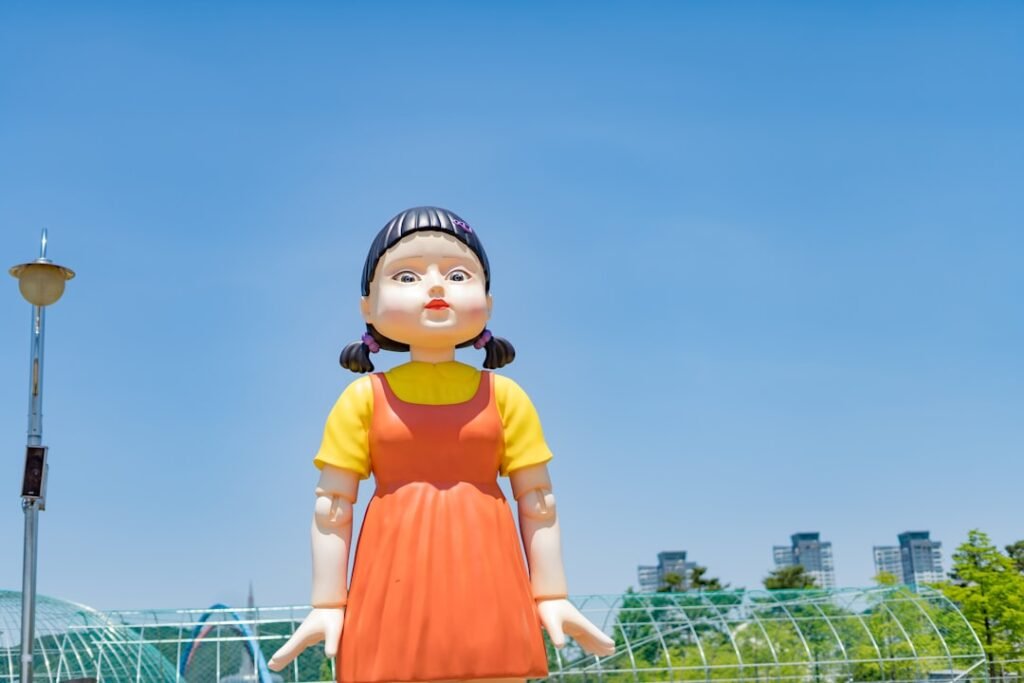

How to Ask for Help and Clarification in Korean
Asking for help is a fundamental aspect of communication, transcending language barriers and cultural differences. In the context of learning Korean, the ability to seek assistance is not only crucial for language acquisition but also for building relationships and fostering connections with native speakers. When learners express their need for help, they demonstrate a willingness to engage and immerse themselves in the language, which can significantly enhance their learning experience.
Moreover, asking for help can lead to valuable insights and knowledge that may not be readily available through textbooks or self-study. In Korean culture, the act of seeking assistance is often viewed positively, as it reflects humility and a desire to learn. This cultural perspective encourages individuals to support one another, creating a sense of community and collaboration.
By understanding the importance of asking for help, learners can navigate their language journey more effectively, gaining confidence and competence in their Korean language skills. It is essential to recognise that asking for help is not a sign of weakness; rather, it is an opportunity for growth and development. Learn Korean in Oslo! NLS Norwegian Language School is now offering classes. Register today.
Table of Contents
ToggleSummary
- Asking for help in Korean is important for effective communication and building relationships.
- Polite ways to ask for help in Korean include using honorifics and polite speech levels.
- Using the correct honorifics when asking for help in Korean shows respect and consideration for the other person.
- Common phrases for seeking clarification in Korean can help avoid misunderstandings and confusion.
- Expressing confusion or misunderstanding in Korean can help clarify the situation and lead to better communication.
Polite Ways to Ask for Help in Korean
Politeness is a cornerstone of Korean communication, and knowing how to ask for help politely can make a significant difference in how your request is received. One of the most common phrases used to ask for assistance is “도와주세요” (dowa juseyo), which translates to “please help me.” This phrase is versatile and can be used in various situations, whether you are seeking help with language learning or navigating daily life in Korea. The addition of “주세요” (juseyo) adds a layer of politeness, making your request more respectful.
Another polite way to ask for help is by using the phrase “죄송하지만 도와주실 수 있나요?” (joesonghajiman dowajusil su innayo?), which means “I’m sorry, but could you help me?” This expression not only conveys your need for assistance but also acknowledges the other person’s time and effort. By incorporating such polite phrases into your vocabulary, you will not only improve your language skills but also demonstrate cultural awareness and respect towards your interlocutors.
Using the Correct Honorifics when Asking for Help in Korean

In Korean, the use of honorifics is essential when addressing others, particularly in formal or respectful contexts. When asking for help, it is crucial to use the appropriate level of politeness based on your relationship with the person you are addressing. For instance, if you are speaking to someone older or in a higher social position, using honorific forms such as “선생님” (seonsaengnim) for teachers or “사장님” (sajangnim) for company presidents is advisable.
This demonstrates respect and acknowledges their status. When formulating your request, you might say, “선생님, 도와주실 수 있으세요?” (seonsaengnim, dowajusil su isseuseyo?), meaning “Teacher, could you help me?” This structure not only shows your need for assistance but also reflects your understanding of social hierarchies within Korean culture. By mastering the use of honorifics, learners can navigate conversations more effectively and foster positive interactions with native speakers.
Common Phrases for Seeking Clarification in Korean
Seeking clarification is an integral part of effective communication, especially when learning a new language. In Korean, there are several phrases that can be employed to request clarification. One commonly used phrase is “다시 말씀해 주시겠어요?” (dasi malsseumhae jusigesseoyo?), which translates to “Could you please say that again?” This phrase is polite and shows that you are genuinely interested in understanding what has been said.
Another useful expression is “무슨 뜻이에요?” (museun tteus-ieyo?), meaning “What does that mean?” This phrase can be particularly helpful when encountering unfamiliar vocabulary or expressions. By using these phrases, learners can actively engage in conversations and ensure they grasp the intended meaning behind the words spoken by their interlocutors. This not only aids in language comprehension but also encourages a more interactive learning experience.
How to Express Confusion or Misunderstanding in Korean
Expressing confusion or misunderstanding is a natural part of the learning process, and doing so in Korean requires specific phrases that convey your feelings accurately. A simple yet effective way to express confusion is by saying “이해가 안 돼요” (ihaega an dwaeyo), which means “I don’t understand.” This straightforward expression allows you to communicate your difficulty without hesitation. Additionally, if you want to elaborate on your confusion, you might say, “이 부분이 잘 이해가 안 돼요” (i bugeun-i jal ihaega an dwaeyo), meaning “I don’t quite understand this part.” By articulating your confusion clearly, you invite further explanation from your conversation partner, fostering a collaborative learning environment.
Embracing moments of misunderstanding as opportunities for clarification can significantly enhance your language skills and boost your confidence.
Seeking Help in Formal and Informal Situations in Korean

The context in which you seek help can greatly influence how you phrase your request in Korean. In formal situations, such as when addressing a superior or an elder, it is essential to use polite language and honorifics. For example, you might say “도와주실 수 있으신가요?” (dowajusil su isseusinkayo?), which translates to “Could you please help me?” This level of formality demonstrates respect and acknowledges the social dynamics at play.
Conversely, in informal situations with friends or peers, you can adopt a more casual tone. A simple “도와줘!” (dowajwo!), meaning “Help me!” suffices among close acquaintances. Understanding when to switch between formal and informal language is crucial for effective communication in Korean.
By adapting your speech according to the context, you will not only convey your message more clearly but also strengthen your relationships with those around you.
Using Body Language and Gestures to Communicate the Need for Help in Korean
Non-verbal communication plays a significant role in expressing needs and emotions across cultures. In Korea, body language and gestures can enhance verbal requests for help. For instance, if you are struggling to articulate your thoughts verbally, using hand gestures or facial expressions can effectively convey your need for assistance.
Pointing at an object or mimicking an action can provide context that words alone may not capture. Additionally, maintaining eye contact while asking for help signals sincerity and engagement. Nodding while listening to responses also indicates that you are actively participating in the conversation.
By combining verbal requests with appropriate body language, learners can create a more dynamic interaction that fosters understanding and cooperation.
Tips for Overcoming the Fear of Asking for Help in Korean
Many language learners experience anxiety when it comes to asking for help, fearing they may make mistakes or appear incompetent. However, overcoming this fear is essential for growth and improvement. One effective strategy is to remind yourself that making mistakes is a natural part of the learning process.
Each error presents an opportunity to learn and refine your skills. Practising with friends or fellow learners can also alleviate anxiety. Role-playing scenarios where you ask for help can build confidence and familiarity with the language.
Additionally, setting small goals—such as asking a simple question each day—can gradually desensitise you to the fear of seeking assistance. Embracing vulnerability and recognising that everyone has been a beginner at some point will empower you to reach out for help without hesitation.
Understanding Cultural Norms and Etiquette when Asking for Help in Korean
Cultural norms play a significant role in how requests for help are perceived in Korea. Understanding these norms can enhance your interactions with native speakers. For instance, it is customary to express gratitude after receiving assistance; phrases like “감사합니다” (gamsahamnida), meaning “thank you,” are essential to acknowledge the support provided by others.
Moreover, being aware of the hierarchical nature of Korean society can inform how you approach someone when seeking help. Addressing individuals by their titles or using appropriate honorifics demonstrates respect and consideration for their position. Familiarising yourself with these cultural nuances will not only improve your language skills but also enrich your overall experience while interacting with Koreans.
How to Politely Decline Help in Korean
While seeking assistance is important, there may be times when you need to decline help politely. In Korean culture, it is essential to express gratitude even when refusing assistance. A common phrase used in such situations is “괜찮아요” (gwaenchanhayo), which means “It’s okay” or “I’m fine.” This response conveys appreciation while indicating that you do not require help at that moment.
If you wish to elaborate further, you might say “고맙지만 괜찮아요” (gomabjiman gwaenchanhayo), meaning “Thank you, but I’m okay.” This approach maintains politeness while clearly communicating your decision. By mastering how to decline help gracefully, learners can navigate social interactions more effectively while preserving relationships.
Practicing and Improving Your Korean Language Skills through Asking for Help and Clarification
Asking for help and seeking clarification are invaluable practices that contribute significantly to improving your Korean language skills. Engaging with native speakers allows learners to encounter real-life language usage beyond textbook examples. Each interaction provides an opportunity to learn new vocabulary, idiomatic expressions, and cultural nuances that enrich one’s understanding of the language.
Moreover, actively seeking assistance encourages learners to step out of their comfort zones and engage with others confidently. Whether through formal classes or informal conversations with friends, every request for help serves as a stepping stone towards fluency. The more you practice asking questions and clarifying doubts, the more proficient you will become in navigating conversations in Korean.
In conclusion, as learners embark on their journey to master the Korean language, they should embrace the importance of asking for help as an integral part of their experience. The NLS Norwegian Language School in Oslo offers comprehensive courses tailored specifically for those interested in learning Korean. With experienced instructors who understand the nuances of the language and culture, students will find themselves well-equipped to navigate both formal and informal situations confidently.
The school’s emphasis on practical communication skills ensures that learners not only grasp grammatical concepts but also develop the ability to engage meaningfully with native speakers—making it an ideal environment for anyone eager to explore the richness of the Korean language and culture.
If you want to learn Norwegian, you can register for classes here. We look forward to hearing from you and helping you become fluent in Norwegian.





